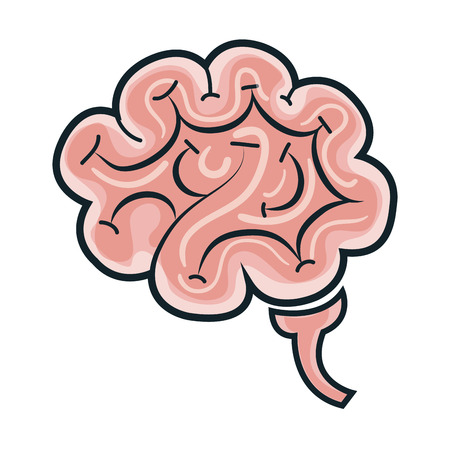1. Understanding AAC: What It Is and Who Can Benefit
Augmentative and Alternative Communication, or AAC, is a term used to describe various ways people can communicate when they have trouble speaking or writing. For adults recovering from a stroke, brain injury, or living with neurodegenerative diseases like ALS or Parkinson’s, AAC can be a crucial tool for connecting with others and expressing needs, thoughts, and feelings.
What is AAC?
AAC covers all the methods of communication that support or replace speech. These can range from simple tools like picture boards to high-tech devices that use computers and apps. The main goal of AAC is to help people communicate as independently as possible.
Common Types of AAC Tools
| Type | Description | Example Tools |
|---|---|---|
| No-Tech | Doesn’t use technology, relies on gestures, facial expressions, or written words. | Pointing, head nods, handwritten notes |
| Low-Tech | Simple tools that don’t require electricity or batteries. | Picture boards, communication books, alphabet boards |
| High-Tech | Electronic devices that generate speech or text. | Speech-generating devices (SGDs), tablets with communication apps (like Proloquo2Go) |
Addressing Common Misconceptions About AAC
- AAC is only for children: Many adults benefit from AAC, especially after a stroke, brain injury, or when dealing with progressive conditions like ALS.
- Using AAC will stop someone from talking: Research shows that using AAC often supports spoken communication rather than replacing it.
- AAC is too complicated: There are many easy-to-use options. Professionals like speech-language pathologists help match the right tool to each person’s needs.
Who Can Benefit from AAC?
AAC is not just for people who can’t speak at all. It also helps those whose speech is hard to understand or who get tired when talking. Here are some examples of adult AAC users:
- Stroke Survivors: Especially those with aphasia who may have trouble finding words or forming sentences.
- People With Brain Injuries: Those who have lost the ability to speak clearly after an accident or illness.
- Individuals With Neurodegenerative Diseases: People with conditions like ALS, Parkinson’s disease, or Multiple Sclerosis may lose their ability to speak over time but can keep communicating with AAC.
AAC Empowers Adults to Connect
No matter someone’s age or medical condition, being able to express themselves is important for dignity and independence. With the right AAC tools and support, adults can stay connected to loved ones and take an active role in daily life.
2. Identifying Communication Needs in Adults
Understanding Speech and Language Challenges After Illness or Injury
After a stroke, brain injury, or the onset of a neurodegenerative disease like ALS or Parkinson’s, many adults find it hard to communicate in ways they used to. These changes can affect how someone speaks, understands language, writes, or even uses gestures. Each person’s experience is unique, so it’s important to look closely at their individual needs and strengths.
How Professionals Assess Communication Challenges
Speech-language pathologists (SLPs) are trained to identify areas where communication has changed. They use different tools and approaches, including:
- Interviews: Talking with the individual and their family about daily routines and challenges
- Observation: Watching how the person communicates in real-life situations
- Standardized Tests: Measuring speech, understanding, reading, and writing skills
- Trial with AAC Devices: Seeing how well a person uses pictures, apps, or communication boards
Common Communication Barriers for Adults
| Barrier | Description | Example Situations |
|---|---|---|
| Aphasia | Trouble finding words, speaking clearly, or understanding language after brain injury or stroke | Trouble ordering food at a restaurant; difficulty following conversations |
| Dysarthria | Weakness or lack of control in speech muscles; speech may sound slurred or slow | Hard to be understood on the phone; people asking to repeat words often |
| Cognitive-Communication Disorder | Trouble organizing thoughts, remembering information, or paying attention during conversations | Losing track of topics; forgetting what was just said; confusion in group settings |
| Progressive Loss of Speech | Gradual reduction in ability to speak clearly as diseases like ALS progress | Needing more time to talk; relying more on gestures or written notes over time |
The Importance of Person-Centered Care in AAC Planning
No two adults have exactly the same goals or challenges when it comes to communication. That’s why person-centered care is key. This means working together with the individual and their family to:
- Understand what matters most—like talking with loved ones, staying independent, or going back to work.
- Choose AAC strategies and tools that fit daily life and personal preferences.
- Support dignity and respect by involving the adult in every step of decision-making.
- Regularly check-in and adjust supports as needs change over time.

3. Selecting and Personalizing AAC Systems
Understanding the Range of AAC Options
When supporting adults with communication challenges after a stroke, brain injury, or neurodegenerative disease, it’s important to know there’s no “one size fits all” approach. Augmentative and Alternative Communication (AAC) systems can be grouped into two main types: high-tech and low-tech options. Each type has its own benefits, and the best choice depends on the individual’s needs and preferences.
| AAC Type | Examples | Best For |
|---|---|---|
| High-Tech Devices | Speech-generating devices, communication apps on tablets or smartphones, eye-tracking computers | People who want dynamic communication tools, need voice output, or benefit from customizable vocabulary and visual displays |
| Low-Tech Supports | Picture boards, alphabet boards, written messages, communication books, yes/no cards | People who prefer simple solutions, have limited access to technology, or need a backup for high-tech devices |
Tailoring AAC Systems to the Individual
No two people are exactly alike—especially when it comes to communication! When selecting an AAC system for an adult in the U.S., it’s essential to consider:
- Their abilities: Physical skills (like hand control), vision, hearing, and cognitive abilities all play a role in choosing the right device or support.
- Their preferences: Some people love using technology; others may feel more comfortable with paper-based options. It’s important to listen to what feels most natural for them.
- Their lifestyle: The American cultural context matters—whether someone needs to communicate in busy public places like grocery stores or sports events, wants to join social media conversations, or needs to participate in family gatherings and holiday traditions.
- Their goals: Is the focus on talking with healthcare providers, keeping up with friends via text, or sharing stories at community events? The AAC system should fit those real-life situations.
Personalization Tips for American Adults
- Add vocabulary that reflects daily life in the U.S., such as favorite foods (“burger,” “pizza”), holidays (“Thanksgiving,” “Fourth of July”), and local slang (“awesome,” “cool”).
- Include tools for common American activities—ordering coffee at Starbucks, making appointments online, or chatting about local sports teams.
- Choose voices and display settings that match the user’s age and personality—many high-tech devices let you pick accents or gender for speech output.
- Keep accessibility in mind: make sure devices are portable enough for outings like shopping trips or family barbecues.
A Collaborative Process
Selecting and personalizing an AAC system is a team effort. Speech-language pathologists (SLPs), occupational therapists, family members, and most importantly—the person using AAC—all work together. By focusing on what matters most to the individual and considering their everyday American experiences, we can help them communicate confidently wherever life takes them.
4. Involving Family, Friends, and the Community
The Importance of Communication Partners
When adults use AAC (Augmentative and Alternative Communication) after a stroke, brain injury, or due to neurodegenerative diseases, their success often depends on the people around them. Family members, friends, caregivers, and healthcare professionals are key partners in supporting communication. These partners can help make sure the AAC user feels included, understood, and confident.
Strategies for Training and Empowering Communication Partners
| Who | How to Support AAC Users | Tips for Success |
|---|---|---|
| Family & Friends | Learn about the AAC device and practice using it together. Use simple language and be patient. Celebrate all communication efforts. | Ask yes/no questions; keep eye contact; give extra time for responses. |
| Caregivers | Integrate AAC into daily routines like meals or outings. Repeat and clarify messages as needed. | Model AAC use; encourage independence; avoid finishing sentences unless asked. |
| Healthcare Professionals | Offer ongoing training on AAC devices and strategies. Work with speech-language pathologists to personalize communication tools. | Document preferences in care plans; include AAC goals in therapy sessions. |
Practical Training Ideas
- Role-play common scenarios: Practice ordering at a restaurant or making a phone call using the AAC device.
- Create visual supports: Make picture boards for home or community activities.
- Provide written instructions: Share easy-to-follow guides about the AAC system for anyone who interacts with the user.
- Set up regular check-ins: Schedule family meetings or team huddles to discuss progress and challenges.
Fostering Inclusive Communication in American Community Settings
AAC users should feel comfortable communicating wherever they go—at church, in stores, at sports games, or public events. Here are some ways to support inclusive communication in typical American settings:
- Educate others: Briefly explain how the AAC device works when meeting new people.
- Advocate for accessibility: Ask community centers and event organizers to provide quiet spaces and allow extra response time during group activities.
- Create supportive environments: Encourage local businesses to welcome AAC users by offering written menus, visual aids, or staff training on basic AAC etiquette.
- Join support groups: Connect with local or online groups for individuals who use AAC and their families to share tips and encouragement.
Everyday Scenarios: Supporting Communication Partners
| Setting | What Partners Can Do |
|---|---|
| Coffee Shop | Help prepare a phrase on the AAC device ahead of time (e.g., “I’d like a medium coffee”). Stand nearby for support if needed. |
| Doctor’s Office | Bring a list of medical phrases or questions saved on the device. Remind staff to address the AAC user directly. |
| Family Gatherings | Create group games where everyone uses pictures or written words. Give turns so the AAC user can join conversations easily. |
| Parks & Recreation Centers | Cue staff that your friend or family member uses an AAC device. Ask about accessible programs or accommodations. |
The Takeaway: Teamwork Makes Communication Possible
No one communicates alone. By learning about AAC and working together as a team—family, friends, caregivers, professionals, and the wider community—you help adults using AAC connect with others, express themselves fully, and take part in everyday life across America.
5. Overcoming Challenges and Promoting Successful Use
Addressing Common Barriers to AAC Use
For adults using Augmentative and Alternative Communication (AAC) after a stroke, brain injury, or due to neurodegenerative diseases, there can be several challenges. These may include social stigma, funding issues, and keeping devices working well. Understanding these obstacles is the first step to finding solutions that help every adult communicate confidently.
Common Obstacles Faced by AAC Users
| Obstacle | Description | Possible Solutions |
|---|---|---|
| Stigma | Feeling embarrassed or worried about using AAC in public because of what others may think. | Peer support groups, community education, and positive role models who use AAC. |
| Funding | The high cost of AAC devices and software can make them hard to get. | Insurance coverage (like Medicare/Medicaid), grants from non-profits, and state assistive technology programs. |
| Device Maintenance | Keeping the device charged, updated, and in good repair can be challenging. | Regular training for users/caregivers, technical support hotlines, and local AAC clinics. |
Real-Life Stories: Success Through Support and Advocacy
Karen’s Story: After her stroke, Karen felt isolated until she joined an online AAC user group. There, she learned new ways to advocate for herself and found funding resources. With her new device, she reconnected with friends at her church and even started volunteering again.
Mike’s Story: Mike, a veteran living with ALS, got help from his local VA hospital’s speech therapist. They helped him get a tablet-based communication app covered by insurance. Mike now uses his AAC device at family gatherings and during doctor visits, making sure his voice is always heard.
Resources for Ongoing Support in the U.S.
- The United States Society for Augmentative and Alternative Communication (USSAAC): Offers advocacy, peer connections, and educational resources for adults using AAC.
- AbleData & State Assistive Technology Programs: Provide information on funding options and device trials in your area.
- SPEAK OUT!® & Project Euphonia: Free programs focused on voice banking and communication support for people with neurodegenerative diseases.
- Local Rehab Centers: Many offer ongoing device maintenance help and caregiver training sessions.
Tips for Promoting Successful AAC Use
- Create a Support Team: Involve family members, caregivers, therapists, and peers to encourage regular use of the device.
- Practice Real-Life Scenarios: Role-play ordering food, making phone calls, or joining group conversations using the AAC device.
- Troubleshoot Together: Don’t hesitate to reach out to technical support or user communities when you run into problems with your device.
- Celebrate Progress: Every milestone counts—whether it’s saying “hello” independently or sharing a story at dinner.
Your Voice Matters!
No matter the obstacle, remember that everyone deserves a way to communicate. With the right tools, support network, and resources tailored for life in the U.S., adults using AAC can thrive at home, work, and in their communities.


